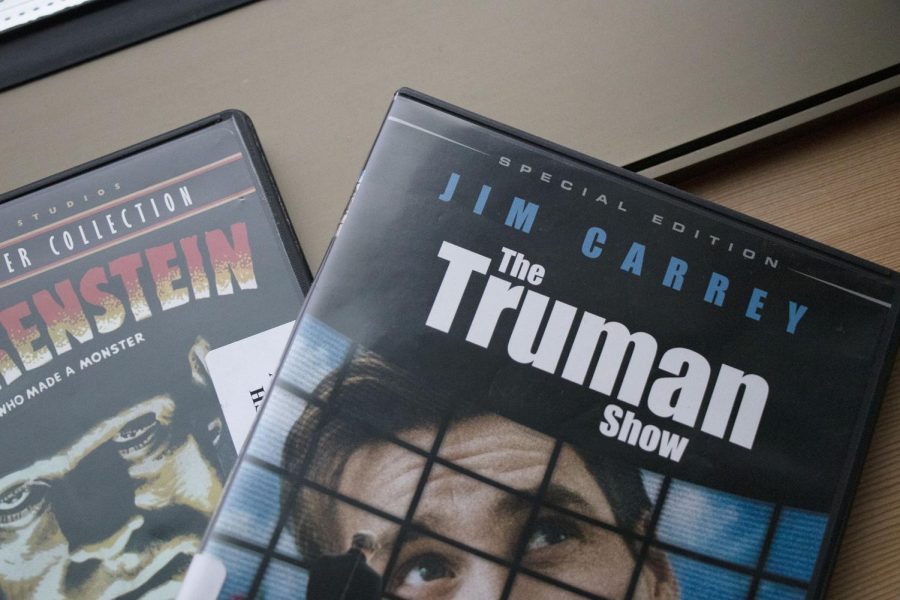The Evolution of Modern Cinema
CINEMA HAS DRASTICALLY CHANGED FROM CLASSICAL MOVIES LIKE “FRANKENSTEIN’S,” TO MOVIES LIKE THE “TRUMAN SHOW”. This change comes about through a change similar to biological evolution, which gives the movies from each decade their own distinct “adaptations. These changes aren’t necessarily always good, but they are inevitable.
October 3, 2019
Movies are a constantly evolving form of art; if you look back in time, it is obvious how much movies have changed, and how different today’s movies are from those of the Golden Age of Cinema (the 1950s). The topics and concepts that movies tackled changed along with audiences’ perceptions in a process similar to biological evolution. Every decade has its own unique kind of movies that are heavily influenced by the culture of the time, but there are some general trends in the evolution of movies over the years that can be easily observed. The constant progression in cinematic technology, and the drift away from compelling, deep stories and towards action and cheap thrills, are two most noticeable of these aforementioned trends.
Modern cinema has had many different faces throughout the years, with one of the most iconic of these faces being the 1950s. Movies in the fifties had a distinct style which was heavily influenced by the culture of the time. Filmsite discussed how movies in the fifties were revolved around post war American life. The article discussed how concepts such as the Atomic family and Suburbia motivated Hollywood to produce movies that appeal to people with these lifestyles. The epic dangers of John Wayne westerns and the romance of Marylin Monroe movies appealed directly to the longing for adventure that was felt by many people stuck in suburban life.
The fifties were also a decade of great innovation. New technologies allowed for better picture quality and color, while the invention of drive-in theaters led to record numbers at the box office for various movie studios. Despite these factors, the movie industry began to struggle towards the end of the decade. Retrowaste addressed the stagnation of the movie industry. They explained how audiences began to feel fatigue towards the over-saturated movies of the era. The movie industry needed to change, and through a process similar to Natural Selection, in which the fittest animals survive and pass on their traits, the ideas that were successful with the new audiences lived on and became the new norms of the film industry.
The next major cinematic evolution would take place during the 1970s. There were massive leaps in visual technology and cinematic concepts during the seventies that are still used in modern day movies. After the Vietnam War, movies adopted a very gritty style. Movies like “Taxi Driver” and “The Godfather” established the dark tone that became synonymous with films from this decade. This dark tone was a direct reflection of the attitudes of American society at the time and perfectly encapsulated life in America. However, audiences eventually began to demand a change, and that is how the first Hollywood blockbusters came to be. These movies were some of the very first movies that were geared around epic spectacle, instead of profound story-telling. Senior Marcus Bratton stated that “movies from the Late 70s, like ‘alien’, revolutionized visual effects.” These movies paved the way for the increased use of visual effects in movies. Over time, movies began to abandon deep storytelling for action and these aforementioned effects. This process would gradually increase over the years until it reached where we are now, where movies are dependent on CGI and action, instead of their stories.
We currently live in the age of action movies. The big screen is over-saturated with big budget blockbusters and over the top superhero movies, with well written stories being primarily reserved for the silver screen (TV). The New York Film Academy explained modern movies try to keep the audience’s attention with short shots and fast motion, and they are becoming more and more reliant upon CGI for even basic things such as lighting. This change in the movie-making style diverts the audience’s attention away from the poorly written stories and onto the cool explosions allowed to exist by the progression of cinematic technology. This leads to the hollowness felt by avid moviegoers who care about the stories when they see one of these modern films. These movies are the culmination of years of dumbing down cinema for audiences who prefer the instant gratification of action over the long-term fulfillment of a good story. But there is a change coming up on the horizon. You can see it being foreshadowings in the box office failures of movies like “The Lone Ranger and “John Carter,” and the poor reviews of movies like “Captain Marvel” and “Justice League.” Senior Zay Clayton claimed that “ you can already see that people are already getting bored with superhero movies, especially now, after the last Avengers movie.” The evolution of cinema can not be stopped; it is inevitable that the format of movies will change once again.
We now stand at a crossroads in cinematic evolution. It is almost time for natural selection to do its thing again. We now have the technology necessary to create new kinds of movies, the likes of which have never been before. Audiences are beginning to get fatigued of superhero movies. Seniors Zay Clayton and Marcus Bratton stated that mindless action movies can not, and will not, last much longer,and they have a point. Film as Literature teacher Ellen Jarvinen stated that “these movies are not fulfilling enough to last a long time, Audiences will begin to get bored”. They all made a similar claim that modern action are too insubstantial to last very long. Which is why studios have to milk franchises like “Fast and the Furious” to their last penny. It is because these movies are hollow and have no substance, which has sadly been caused by the development of technology and how movies have been able to be profitable on effects alone, leading to good, deep, multilayered story-telling being tossed out the window. Let us not take the same path. Let us strive for something new in the next chapter in the evolution of cinema.




